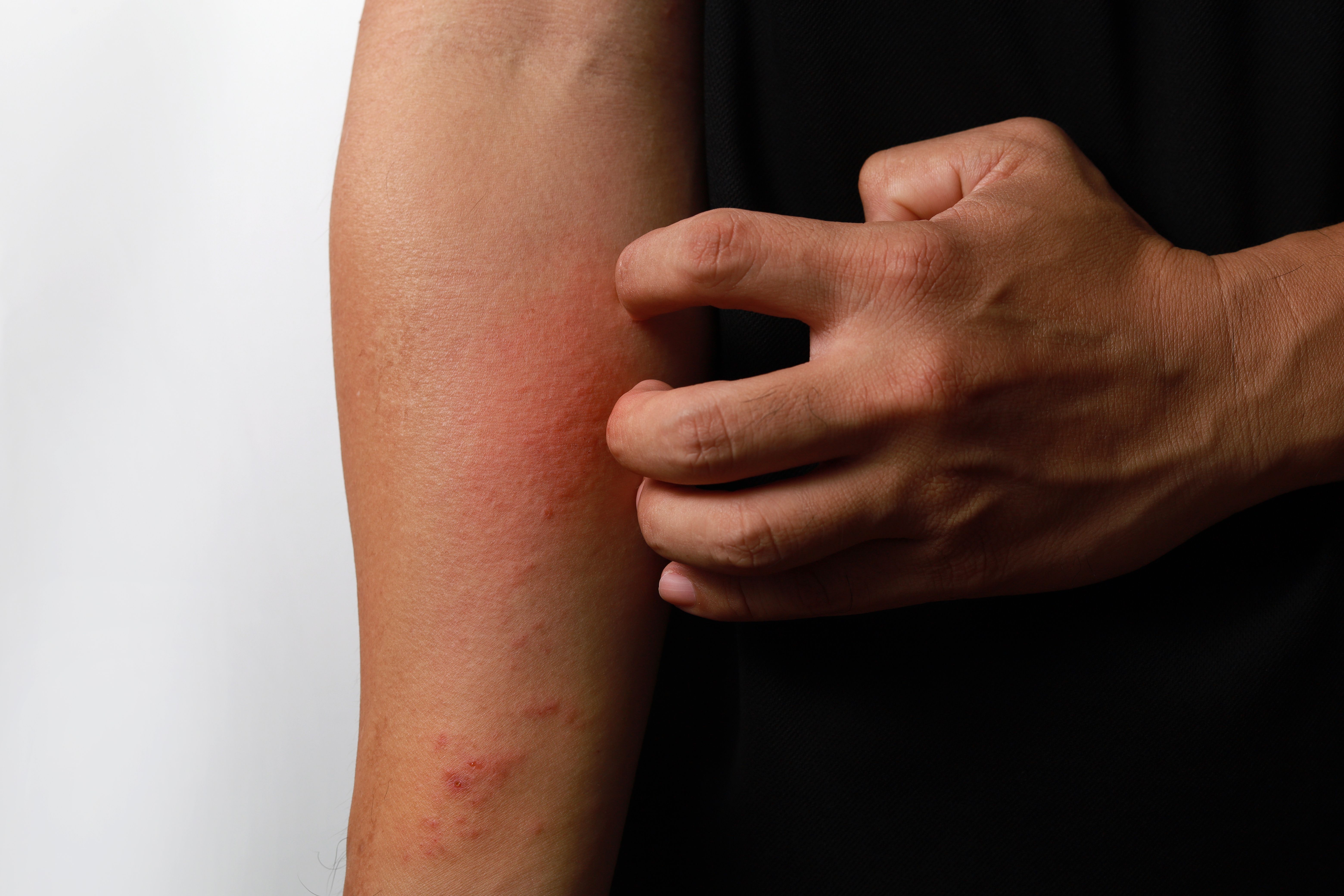- Acne
- Actinic Keratosis
- Aesthetics
- Alopecia
- Atopic Dermatitis
- Buy-and-Bill
- COVID-19
- Case-Based Roundtable
- Chronic Hand Eczema
- Chronic Spontaneous Urticaria
- Drug Watch
- Eczema
- General Dermatology
- Hidradenitis Suppurativa
- Melasma
- NP and PA
- Pediatric Dermatology
- Pigmentary Disorders
- Practice Management
- Precision Medicine and Biologics
- Prurigo Nodularis
- Psoriasis
- Psoriatic Arthritis
- Rare Disease
- Rosacea
- Skin Cancer
- Vitiligo
- Wound Care
News
Article
Specially Designed Fabric Helps Maintain Skin Homeostasis For Those With Atopic Dermatitis
Author(s):
Researchers found that the Comfiknit Atopic Eczema T-shirt reduced Eczema Area and Severity Index scores.
Clothing made of fabric especially for those with atopic dermatitis (AD) provided some relief of symptoms in a Japanese study.1 The Comfiknit Atopic Eczema T-shirt may have helped maintain skin homeostasis.
ltyuan/AdobeStock

Researchers theorized that because fabric is in close contact with skin, it is an important component of the skin environment and selecting a “smooth, nonirritating, temperature-regulating, breathable, and absorbent1” fabric is essential to comfort.
“This is an interesting study, and we do know that certain fabrics can worsen atopic dermatitis, while others are more beneficial. Designing clothing specifically for skin conditions is a worthy endeavor since up to 20% of the population suffers from atopic dermatitis. That said, I do think it is important to consider not just the fabric type, but also the textile dyes since those can be a cause of allergic contact dermatitis,” Alanna Bree, MD, a pediatric dermatologist and founder of Made A Masterpiece told Dermatology Times®.
The Comfiknit Atopic Eczema T-shirt is made of 3 yarns and is designed to absorb excess perspiration. The innermost layer is made of polylactic acid, which is a hydrophobic fiber that absorbs perspiration. The middle layer is made of Spandex to provide elasticity. The outermost layer is made of Modal, which is a hydrophilic fiber that retains perspiration.
Stitching on the shirt was on the outside to prevent friction on the skin. The summer T-shirt was short-sleeved, white, and had a V-neck. The winter T-shirt was long-sleeved, green, and had a crewneck. The yarns used in the shirts were the same, but of different thicknesses.
Researchers gave 3 of each of the shirts to the 10 participants who were instructed to wear the shirts as undergarments. Participants were told not to use fabric softener on the shirts but otherwise to wash them the same as other garments. Participants wore the T-shirts for 4 weeks during summer and 4 weeks during winter.
At baseline, participants completed and were evaluated on the Eczema Area and Severity Index (EASI), the Patient-Oriented Eczema Measure (POEM), the itch Visual Analogue Scale, the stratum corneum water content, skin pH, and skin bacterial cultures.
Of the 9 participants who completed the study, the average age was 39.3 years and all were being treated for AD. After wearing the Comfiknit T-shirt for 4 weeks in summer and winter, EASI scores fell, particularly for those with severe AD. The average POEM score also fell after wearing the T-shirt, although 1 patient in winter and 2 in summer had higher POEM scores after the 4 weeks.
For most of the participants, skin pH stayed slightly acidic throughout summer and winter. Wearing the T-shirts did not seem to affect skin bacteria.
Investigators acknowledged that the small size of the study could impact results, but suggested that clothing fabric may assist in maintaining skin homeostasis and help those with AD.
Reference
- Hattori N, Morisaki H, Matsumoto M, et al.Impact of wearing Comfiknit Atopic Eczema T-shirts on patients with atopic dermatitis: an open-label pilot study. J CutanImmunol Allergy. 2023;00:1–9. https://doi.org/10.1002/cia2.12316
Newsletter
Like what you’re reading? Subscribe to Dermatology Times for weekly updates on therapies, innovations, and real-world practice tips.











